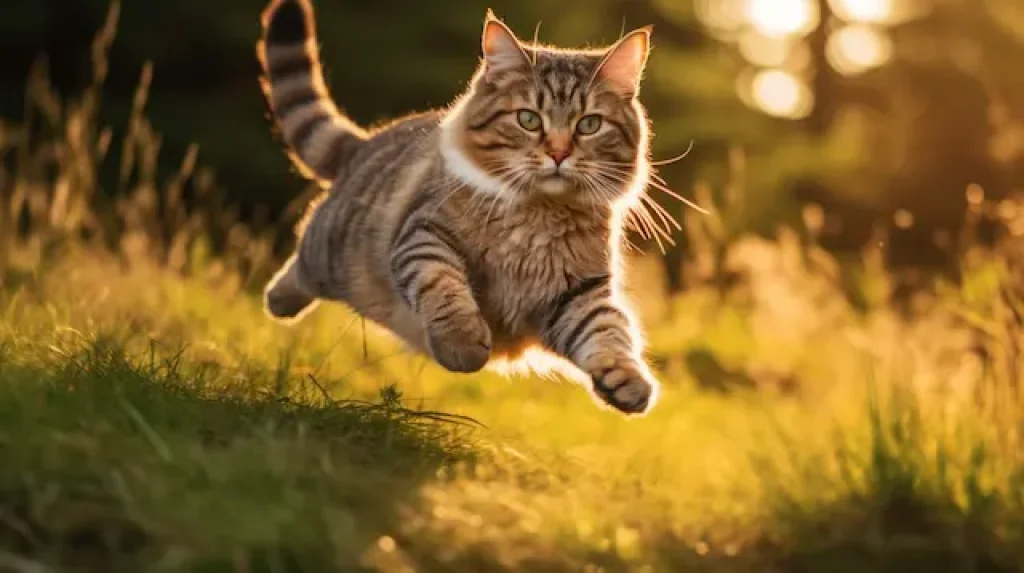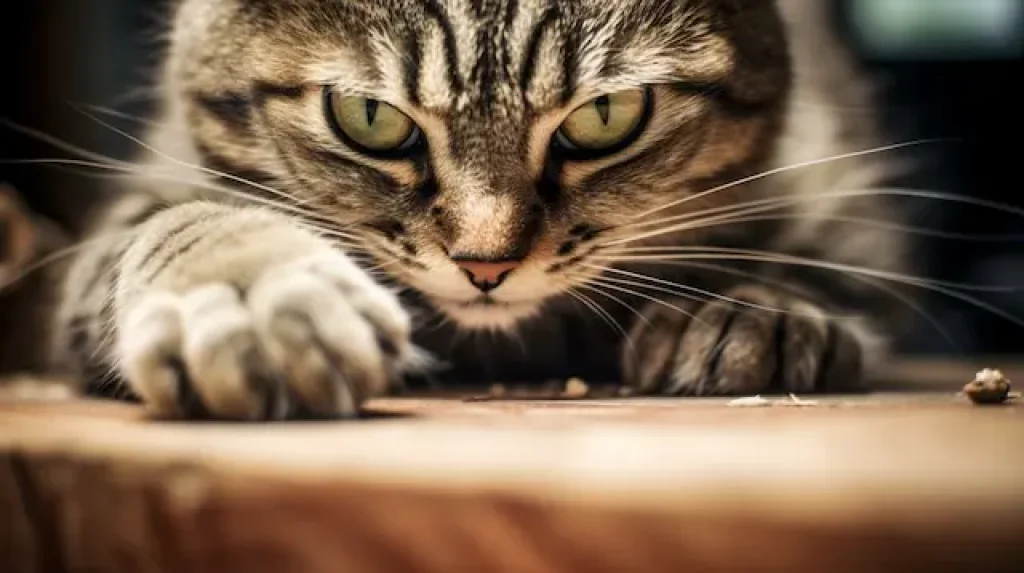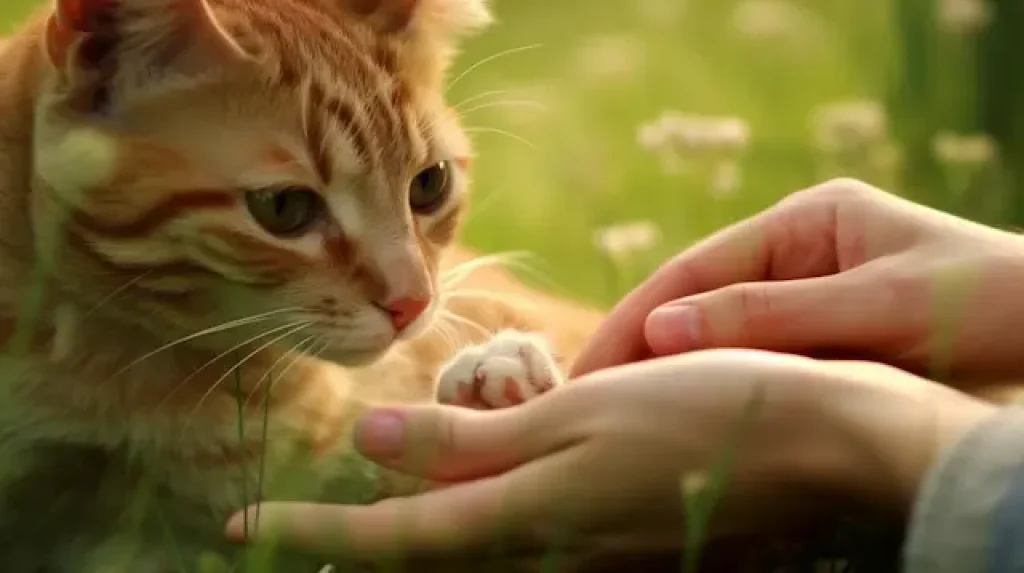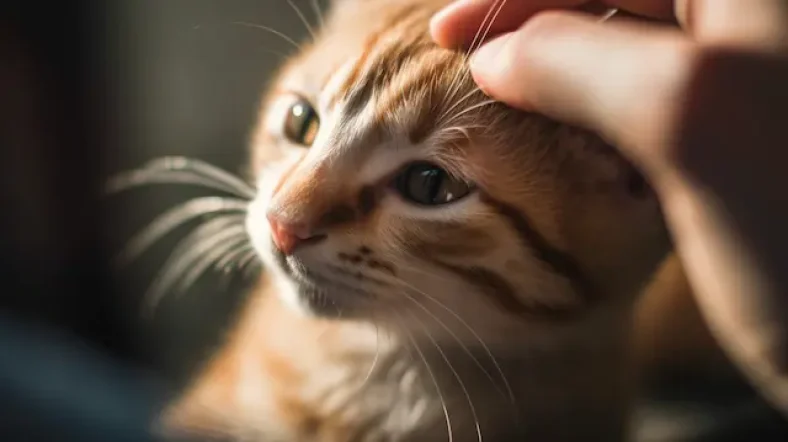If you’re a cat owner, you may have heard conflicting information about whether or not to cut your feline friend’s whiskers. Some people believe that trimming whiskers is harmless and can even make cats look neater, while others argue that cutting them is cruel and can cause physical and emotional distress for the animal.
So what’s the truth? Are you supposed to cut cat whiskers?
Whiskers, also called vibrissae, serve many purposes for cats beyond just looking cute. In fact, they play a crucial role in helping cats navigate their surroundings, communicate with other animals, and protect themselves from danger.
Read on to learn more about why cutting cat whiskers is harmful and how you can help keep your furry companion healthy and happy by leaving those precious hairs intact.
Contents
The Importance Of Cat Whiskers
Cat whiskers are an essential part of a cat’s anatomy, serving many important functions. Whisker growth is natural and necessary for cats to navigate their surroundings effectively.
Unlike human hair, whiskers do not shed and grow back at the same rate, so it is crucial not to trim them. Whisker trimming may seem like a harmless grooming practice, but it can have serious consequences for your feline friend. Cutting off even just one or two whiskers can disrupt a cat’s sense of balance and coordination, making it difficult for them to move around safely.
Furthermore, damaged or shortened whiskers cannot provide accurate information about the environment around the cat. It is also worth noting that cutting cat whiskers is considered animal cruelty in some countries because of how vital they are to a cat’s well-being. Therefore, as responsible pet owners, it is our duty to keep our pets safe by avoiding any practices that could harm them.
In the next section, we will explore how these incredible sensory organs help cats navigate their surroundings with ease.
How Whiskers Help Cats Navigate
As we discussed earlier, cat whiskers are incredibly important to a feline’s well-being. Cutting a cat’s whiskers can severely impair their ability to navigate the world around them.

Whisker anatomy is fascinating – these specialized hairs are rooted deep in a cat’s skin and connected directly to sensitive nerves that allow them to detect changes in air pressure and vibration. This sensory function helps cats determine the distance, size, texture, and even temperature of objects in their environment. Without this crucial tool, they would struggle with basic tasks such as hunting prey or avoiding danger.
It’s also worth noting that cat whiskers serve another purpose besides navigation – communication. Felines use subtle movements of their whiskers to convey emotions like happiness, curiosity, or aggression. For example, when your kitty greets you with its tail up and its whiskers relaxed and forward-facing, it’s indicating friendliness and affection.
Understanding this aspect of whisker behavior can help strengthen the bond between you and your furry companion.
Whiskers As A Form Of Communication
Whiskers are not just ordinary hairs on a cat’s face. They serve as an essential tool for communication and understanding emotions. Cat whiskers can detect even the slightest changes in air currents, providing felines with vital information about their surroundings.
In addition to their sensory abilities, whiskers also play a significant role in conveying cats’ body language. When happy or relaxed, a cat’s whiskers will be slightly forward and pointed slightly upward. However, when feeling threatened or aggressive, they may flatten against the face or point downward.
Understanding cat body language is crucial for pet owners to communicate effectively with their furry friends. Observing your cat’s posture, tail position and ear movements along with its whisker positions can give you valuable insights into what your cat is trying to convey.
By paying attention to your cat’s overall demeanor and subtle cues like its whisker positioning, you can better understand how it feels and respond appropriately.
In the next section, we’ll discuss how cats use their claws and teeth for protection and self-defense.
Protection And Self-Defense
Whiskers as a form of communication play an important role in how cats interact with their surroundings. These sensory hairs help them navigate through the world and communicate with other animals.

But what about cutting cat whiskers? Is it something that should be done?
When it comes to ways to protect cats, one thing is clear: Cutting their whiskers is not one of them. Whiskers are essential for a cat’s survival and well-being. They use them to sense danger, judge distances, and even determine whether or not they can fit through tight spaces.
Self-defense training can also be beneficial for both cats and humans alike. Cats have natural instincts when it comes to defending themselves, but training can enhance these skills and give them more confidence in potentially dangerous situations. For humans, self-defense training can provide a sense of empowerment and improve overall physical fitness.
Cutting cat whiskers may seem like a harmless act, but the harmful effects can be severe. It can cause disorientation, difficulty navigating through small spaces, and even affect their ability to eat properly. It’s important to remember that whiskers serve a crucial purpose for our feline friends and should never be cut under any circumstances.
The Harmful Effects Of Cutting Whiskers
Cutting a cat’s whiskers is never recommended. While it may seem like a harmless grooming practice, the consequences can be severe.
One potential injury that can occur from cutting whiskers is an increased risk of falling or getting stuck in tight spaces. Whiskers help cats navigate their environment and determine if they can fit through small openings.
Moreover, cutting a cat’s whiskers can lead to miscommunication with other cats. Whiskers play an important role in feline communication, as they convey mood and emotion. A cat without its whiskers may have difficulty expressing itself properly, leading to misunderstandings with other cats. This lack of clear communication could even result in fights or aggressive behavior between cats.
In addition to physical harm and social complications, cutting a cat’s whiskers can also cause emotional distress for the animal. Cats rely on their senses to feel safe and secure in their surroundings, and removing such an essential part of them could leave them feeling vulnerable and anxious.
Therefore, responsible pet parents should avoid any action that would compromise their animal’s health and well-being.
Frequently Asked Questions
What Are The Different Types Of Whiskers On A Cat’s Body?
Cat whiskers are a crucial feature of their body, serving various purposes rather than just being an ordinary facial hair. These specialized hairs come in different types and lengths, including tactile, carpal, and genal whiskers that help cats navigate through the environment with ease.
The purpose of these whiskers is to assist them in sensing changes in air pressure or movements around them, which helps them detect potential threats or prey nearby. Cutting cat whiskers can be detrimental to their sensory abilities and overall well-being as they rely heavily on these remarkable tools for survival.
Can A Cat’s Whiskers Grow Back After They Have Been Cut?
A cat’s whiskers are essential for their survival because they serve as sensory organs. Whisker function allows cats to navigate through areas, determine if a space is too small or large for them, and detect prey.
However, if you cut your cat’s whiskers, it can cause discomfort and confusion in their everyday life. It’s important to note that cutting the whiskers won’t lead to permanent damage since whisker regrowth happens naturally over time.
Nevertheless, it’s best not to cut your cat’s whiskers unless necessary for medical reasons advised by a veterinarian.
Do All Cats Use Their Whiskers In The Same Way?
Just like humans have unique personalities and behaviors, cats also have their own feline behavior that sets them apart from each other.
One of the most noticeable features on a cat is its whiskers, which play a vital role in determining how they interact with their surroundings.
Whisker function varies among different types of cats, but generally speaking, these long hairs help them to navigate through dark environments, balance themselves during jumps or climbs, and even detect changes in air pressure or temperature.
Without their whiskers, cats may become disoriented and unable to perform basic tasks that are essential for survival.
Therefore, it’s important not to cut your cat’s whiskers as doing so could result in serious harm due to impaired sensory ability.
Are Whiskers Sensitive To Touch Or Just Air Movements?
Whiskers are not just decorative features on a cat’s face; they serve an important function in their sensory adaptation. Each whisker is connected to nerve endings that send signals to the brain about their surroundings, making them sensitive to touch and air movements.
These signals help cats navigate through different environments, hunt prey, and maintain balance. Cutting a cat’s whiskers can cause disorientation and affect their ability to perform these tasks correctly. It is crucial to understand the significance of whisker function before considering any actions that may harm or remove them from a cat’s face.
How Do Cats Groom Their Whiskers?
Cats are famously fastidious creatures, spending up to 50% of their waking hours grooming themselves.
But how do they groom those long, luxurious whiskers?
Interestingly enough, cats don’t actually clean their whiskers in the same way they clean the rest of their fur.
Instead, these specialized hairs self-clean by shedding old ones and growing new ones.
This process not only keeps a cat’s whiskers healthy and strong but also helps them navigate their environment with ease.
While there may be some perceived benefits to trimming your cat’s whiskers for aesthetic purposes, it is important to note that doing so can actually put them at risk of disorientation and injury – a dangerous gamble for any feline friend.
In Essence

Cutting a cat’s whiskers is not recommended as they serve important functions for the feline. Whiskers are not just hairs on their face, but rather specialized sensory organs that help cats navigate their surroundings and communicate with other animals.
It is essential to appreciate that cats use different types of whiskers on their body in various ways. Cutting them can cause discomfort and disorientation for the cat, making it challenging for them to move around or hunt effectively.
As the saying goes, ‘if it ain’t broke, don’t fix it.’ Let your cat keep its natural beauty intact by leaving those majestic whiskers uncut. Remember, a happy cat equals a happy cat parent!


